![]()
![]()
![]()
![]()
![]() The Hum now also a Chinese Phenomenon by Dr
Chris Barnes Bangor Scientific and Educational Consultants email mamager@bsec-wales.co.uk
The Hum now also a Chinese Phenomenon by Dr
Chris Barnes Bangor Scientific and Educational Consultants email mamager@bsec-wales.co.uk
Homepage for all my other interdisciplinary
research http://drchrisbarnes.co.uk
Introduction
The Hum is a complex and at first sight seemingly geo-sporadic acoustic phenomenon. The Hum has rarely been audio recorded and not everyone can hear or perceive it. An estimated 2-11% percent of the population may hear the Hum and some might not even realise what they are hearing, thinking instead that their affliction is a form of low frequency tinnitus. Those afflicted complain of a noise like a distant, slowly and irregularly idling engine. Some afflicted have tone matched the Hum to between 30-80 Hz with much slower pseudo-random variations of usually amplitude but occasionally frequency.
The Hum was first documented in the UK in the 1970’s and in the USA in the 1990’s. Because until very recently indeed cases of the Hum appeared limited to Western developed countries, particularly it would appear those in the NATO alliance this has perhaps prompted some to suspect that the Hum may in some way be connected with clandestine military technology. Indeed Deming concluded that the Hum is most likely correlated in time and space with the flights of US military communications aircraft known as TCAMO (1). On the other hand some thought the Hum at least in the UK may have a far more mundane explanation in that it may be associated simply with noise from distant factories (2) or from motorways and gas mains (3).
Because the Hum is a highly subjective phenomenon, with mainly anecdotal reports, doing science on it is not easy. The present author has had the advantage that he can perceive the Hum along with several members of his family and the common denominator appears to be extremely developed low frequency and infrasonic hearing (4). Additionally, the author has also observed magneto-acoustic sensitivity in some individuals which may be potentially important for some kinds of Hum perception (5).
The Hum a new Geography
A good idea of world locations where the Hum is heard or perceived may be gleaned by visiting websites which deal with the subject of the Hum and which log visitor details. Generally speaking one would not expect to visit such websites even out of curiosity unless one was being afflicted by the Hum or Hum like noise. Particularly useful is the website of long term amateur Hum investigator John Dawes (6) who has been investigating the Hum in the UK since it was first heard in Bristol. This website has just updated its map of World visitors and has a map as recent as January 2012, see figure 1.
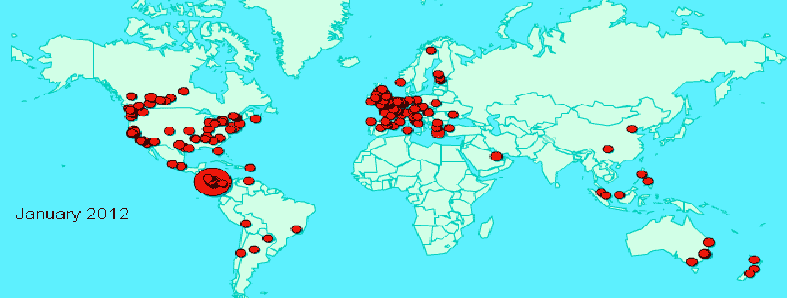
Figure 1: Visits to John Dawes’ Hum website, January 2012.
From the above, it is now clearly apparent that the Geography of the Hum has changed since Deming’s famous publication (1). No longer is the Hum just a phenomenon of NATO countries. There are a considerable number of visits to the site from the Caribbean, from Mexico and from South America. The author has recently made an association between the present day ‘twenty-first century’ Hum and renewable energy systems, especially pumped storage hydro power and wind power (7-9) and in that context has included South America and indeed parts of Africa and India and even Russia which have been shown recently on another Hum database. At the time of writing of that paper there was no evidence for the Hum in China.
The data available here appears to change that situation, essentially leaving virtually no part of the World Hum free. The author has suggested mechanisms by which the Hum could arise either directly as a result of propagated seismic and/or airborne sound and vibrations from renewable energy systems (7-9) or as a result of much more complex electrical ground current interactions (10). In the light of this it is particularly instructive to consider the locations of the visitors to Dawes’ site from China, see figure 1 and to contrast them with known renewable energy sites in China, figure 2, which has only over the past couple of years or so began to invest heavily in and expand such technology alongside of Smart Grid power technology.
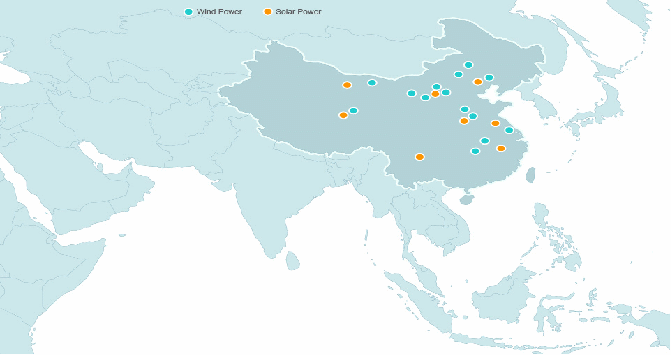
Figure 2: Renewable energy in China
It can clearly be seen that one of the visitors lives extremely close to a very active centre of wind power development and the other next to a centre of solar power development.
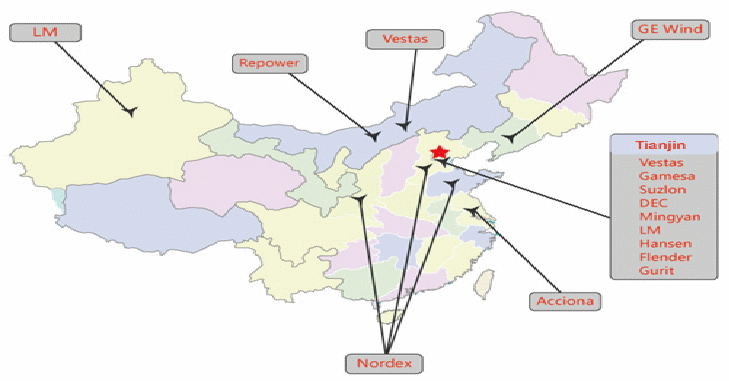
Figure 3 : Wind power developments in China
Those experiencing the Hum possibly due to wind renewable energy in China would appear to reside very close to the Tianjin complex which as can be seen from figure 3, above, is a massive complex with equipment supplied by 9 of the World’s major players in wind technology.
Detail is also available for the solar farm located extremely close to the other visitor, it is the Golmud Solar Park located at 36 degrees 24 minutes North and 95 degrees 7 minutes and 30 seconds east. It is China’s largest Solar Park and was completed in October 2011 (11). What is also clear is the China’s expansion of solar energy has happened only very recently indeed with just under half its solar expansion being in the last year alone, see figure 4 below. Thus is solar power too does produce a Hum related problem, and there are two possible routes for this, then we can perhaps expect an explosion of Hum reports from China in the coming few months and years.
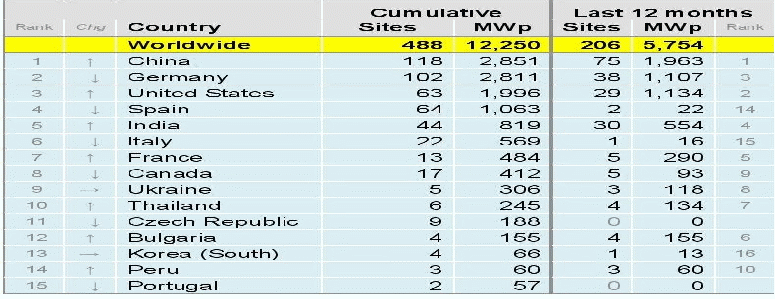
Figure 4
The scale of such solar parks is quite remarkable. It is perceived that the Hum generated by solar parks could arise by one of two main mechanisms. That is either direct ground or airborne inverter noise and/or mechanisms involving unbalanced loads and strong ground currents rather as for wind turbines (9, 10).
It has also been shown that solar panels can act as VHF/ UHF radio antenna and effectively demodulate any signals received and then re-modulate the information signal envelope onto the inverter voltage an can similarly happen at lower frequencies less than 30 MHz because of their vast lengths of interconnecting wires (12). It is envisaged that this would complicate the emergent sound amplitude and /or frequency envelope of any Hum, however arising.
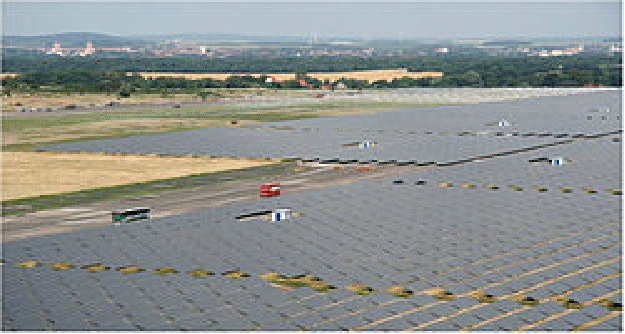
Conclusions
This work shows very strong support for the notion of a twenty first century Hum as an almost unavoidable facet of renewable energy systems. Generally, the Hum is not going to be exclusively due to pipeline systems or motorways. Russia, for instance, has had major gas pipelines for several decades yet until grid connected renewable energy began in Russia there were no Hum reports form that country. These conclusions do not preclude other natural e.g. volcanic noise (13) and anthropogenic noise e.g. fans and compressors (14) source systems from occasionally producing Hum-like effects. Nor do they preclude Smart Grid power systems from producing Hums in other ways by either coherent ground vibration from time coordinated domestic and industrial load compensators (15) or from their microwave backhaul SCADA signals as microwaves are known at certain levels to promote acoustic effects (16).
References
1. http://www.scientificexploration.org/journal/jse_18_4_deming.pdf
2. Experimental study of annoyance due to low frequency environmental noise, R.N. Vasudevan, Colin G. Gordon, Applied Acoustics, 10(1), 1977 pp 57-69
3. http://www.newscientist.com/article/mg13518321.000-factories-and-traffic-blamed-for-the-hum-.html
4. http://www.drchrisbarnes.co.uk/HUMUNIFY.htm
5. http://www.drchrisbarnes.co.uk/HUMUNIFY.htm
6. http://www.johndawes.pwp.blueyonder.co.uk/
7. http://www.drchrisbarnes.co.uk/BANGORhum.htm
8. http://www.drchrisbarnes.co.uk/HUMGRIDNEW.htm
9. https://groups.google.com/forum/?fromgroups#!topic/hum-sufferers/auT557kD61M
10. http://www.drchrisbarnes.co.uk/GROUNDCURRENT.html
11. http://en.wikipedia.org/wiki/List_of_photovoltaic_power_stations
12. http://pv-test.ch/fileadmin/user_upload/lab1/pv/radio_interf_pv_munich2001.pdf
13. http://volcanism.wordpress.com/2010/02/26/infrasound-monitoring-for-marianas-volcanoes/
14. http://www.milieuziektes.nl/ELF/KokomoHumFinalReport.pdf
15. http://www.drchrisbarnes.co.uk/SMARTHUM.htm
16. http://onlinelibrary.wiley.com/doi/10.1111/j.1749-6632.1975.tb35996.x/abstract